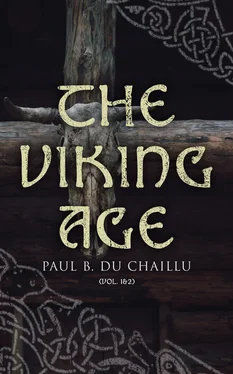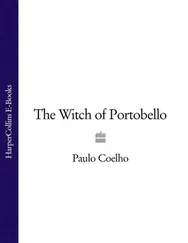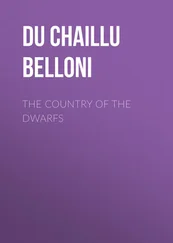After Midgard had been built for the sons of men, there is a golden age on the Ida-völl (plain of movement). Altars and hearths were raised by the Asar, showing that work is conducive to happiness.
The Asar met,
Who raised on the Idavoll
Altars and high temples;
They laid hearths,
They wrought wealth,
They shaped tongs,
And made tools.
They played chess on the grass-plot;
They were cheerful;
They did not lack
Anything of gold
Until three
Very mighty
Thurs maidens came (Nornir)
From Jotunheim.
Then followed a great battle between the Asar and their neighbours, the Vanir. The Asar seem to have been at first defeated, but afterwards made peace. This fight is the most obscure part of the whole of Völuspa.
That fight remembers she
First in the world,
When they pierced
Gullveig 73with spears,
And burnt her
In the hall of Hár; 74
Thrice they burnt
The thrice-born one,
Yet still she lives.
Then all the gods went
To their judgment seats,
The most holy gods,
And counselled about
Whether the Asar should
Tribute pay, 75
Or if all the gods
Should have a feast.
Odin had hurled the spear
And shot at the host;
That was moreover the first
Fight in the world.
Broken was the timber wall 76
Of the Asa-burgh;
The war-exposed plains
The Vanir trampled on.
A fight is also mentioned in the Ynglinga Saga which seems to be the same as the one referred to in Völuspa.
“Odin went with a host against the Vanir, but they withstood him well and defended their land. Asar and Vanir got the victory by turns; each waged war in the other’s land and plundered. When they became tired of this they appointed a meeting for agreement between themselves, and made peace and gave each other hostages. The Vanir gave their foremost men, Njörd the wealthy and his son Frey, and the Asar gave a man called Hœnir, and said he was well fitted to be a chief. He was a tall and very handsome man. The Asar sent with him a man called Mimir, who was very wise; in exchange for him the Vanir gave one, who was the wisest among them, called Kvasir. When Hœnir came to Vanaheim he was at once made chief; Mimir taught him everything. And when Hœnir was at the Things or meetings, and Mimir was not near, and some difficult cases were taken to him, he always gave the same answer, ‘Let others say what is to be done.’ Then the Vanir suspected that the Asar had deceived them in the exchange of men. They took Mimir and beheaded him, and sent his head to the Asar. Odin took the head and besmeared it with the juice of plants, so that it could not rot. He sang charms over it, and by spells made it so powerful that it spoke with him, and told him many unknown things” (Ynglinga, c. 4).
Thór was one of the greatest of the Norse gods after Odin; indeed, these with Frey formed a sort of triad.
“Thór is the foremost of them (the gods); he is called Asa-Thór or Öku-Thór. He is the strongest of all gods and men. His realm is Thrúdvángar (= plains of strength), and his hall is called Bilskirnir; in it there are 540 rooms. It is the largest house built by men. (See Grimnismal.) Thór owns two he-goats, which are called Tanngnjóst (tooth-gnasher) and Tanngrísnir (tooth-gnasher), and a chariot (reid), on which he drives and the he-goats draw it. Therefore he is called Oku-Thór (= the driving Thór). He also owns three costly things. One of them is the hammer Mjolnir which the Hrim Thursar and Berg Risar know when it is aloft, and that is not strange, for he has broken many a head of their fathers or kinsmen. The next best of his costly things is the belt of strength. When he girds himself with it his Asa-strength doubles. He owns a third thing, which is worth much, iron-gloves, without which he cannot hold the handle of the hammer. No man is so wise that he may reckon up all his great feats, but I can tell thee so many tales of him that the hours will be whiled away before I have told all that I know.”
“Hár said: ‘Furthermore there is an As called Týr. He is the boldest and most daring and has much power over victory in battles. It is useful for valiant men to make vows to him. It is a saying that the one surpassing others in valour and fearing nothing is Tý-brave. He is so wise that the wisest man is called Tý-wise. One of the proofs of his daring is this. When the Asar persuaded the Fenriswolf to allow them to tie it with the chain Gleipnir, it did not believe that they would untie it till they laid Týr’s hand into its mouth as a pledge. When they would not untie it then it bit off his hand at the place now called Wolf-joint (wrist). He is therefore onehanded and said not to be the reconciler of men.’ ” (Later Edda, Gylfaginning, 21).
The Later Edda differs from the Grimnismal in giving the number of gods or Asar which it mentions. When Gylfi asks how many Asar there are he is told twelve, and the names of Odin, Höd, and Baldr are omitted from the list. Only a few of these gods seem to have been of sufficient prominence to have had sacrifices offered to them, as is seen in the chapter on Religion, and we cannot depend on the Later Edda for reliable information concerning them.
“The Asar went to their feast, and the twelve Asar who were to be judges sat down in the high-seats: their names were—Thór, Njörd, Frey, Týr, Heimdall, Bragi, Vidar, Vali, Ull, Hœnir, Forseti, Loki” (Later Edda).
The following extract from the Later Edda gives us the names of the principal goddesses, with their leading characteristics.
“Gangleri said: ‘Who are the Asynjar?’ Har answered: ‘Frigg is the highest; she has a very splendid house called Fensalir . The second is Sága, who lives at Sökkvabekk, a large place. The third is Eir; she is the most skilled healer (= physician). The fourth is Gefjon, who is a maiden, and those who die as maidens wait upon her. The fifth is Fulla; she is also a maiden with loose hair, and wears a golden band round her head; she carries the ashen box of Frigg and takes care of her shoe-clothes (= shoes and stockings), and partakes in her secret counsels. Freyja is next in rank to Frigg; she is married to a man called Ód, their daughter is Hnoss; she is so beautiful that fine and costly things are called after her—hnoss. Ód went far off and left Freyja weeping, and her tears are red gold. She has many names; that is because she called herself by different names when she went among foreign nations in search of Ód; she is called Mardöll, Hörn, Gefn, and Sýr. She owns the Brisinga necklace. She is called Vanadis (dis (goddess) of the Vanir). The seventh is Sjöfn; she applies herself much to turning the minds of men to love, both males and females; from her name a loving mind is called sjafni . Lofn is so mild and good to invoke that she gets Allfödr (Odin) or Frigg to allow the marriages of men, male and female, though they have been forbidden or flatly refused; from her name is lof (leave), and that which is lofat (= praised) by men. Vár listens to the oaths of men and the private agreements which men and women make between themselves; these are called várar , and she punishes those who break them. Vör is wise and asks many questions, so that nothing can be hidden from her; when a woman knows a thing she is vör (= aware) of it. Syn guards the door of the hall (Valhalla) and shuts it to those who are not to enter; therefore when some one denies a thing he is said to put down syn (= negation, refuse). Hlin has to guard the men whom Frigg wishes to save from danger. Snotra is wise and of good manners; a wise man or woman is called snotr from her name. Gna, Frigg sends into various worlds on her errands; she has a horse which runs on air and water, called Hófhvarfnir (= hoof-turner)” (‘Later Edda,’ Gylfaginning, 35).
Читать дальше












